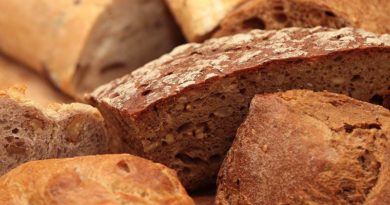Seven a day fruit and veg?!
On Tuesday 1st April I thought I’d spotted the April Fool joke for the day when I woke up to headlines such as “Seven-a-day fruit and veg ‘saves lives’” and “Diet that adds years to life.” Sorry BBC – no lives will be saved – we’re all going to die. We’re also not going to live for years longer by having 7 fruit & veg a day.
The stories were based on this press release and this journal article.
The Abstract
The first thing that I noticed was that the abstract (in italics below) declared that everything except smoking had been adjusted for. Table 1 then showed that 39% of the 0-1 portion a day people smoked vs. 10% of the 7+ portions a day people.
“Methods Cox regression was used to estimate HRs and 95% CI for an association between fruit and vegetable consumption and all-cause, cancer and cardiovascular mortality, adjusting for age, sex, social class, education, BMI, alcohol consumption and physical activity, in 65 226 participants…”
I emailed the named person on the report who described leaving this out as a “terrible oversight.” Jolly good of her to get back to me so quickly, as Dr Longo still hasn’t. I’d already done a couple of interviews before the reply, during which I said that the abstract didn’t record having adjusted for smoking. There is a huge lifestyle thing going on here, however and I don’t know how you can adjust for an entire lifestyle.
The study
The study did a similar thing to the Longo animal protein study – they didn’t divide the subjects studied into equal sized groups – quintiles. They divided them into uneven groups of those whom (when asked what they ate yesterday – yes, I know – usual huge caveats) replied:
0-<1 portion of fruit & veg (15.2%);
1-<3 portions of fruit & veg (30.9%);
3-<5 portions of fruit & veg (29%);
5-<7 portions of fruit & veg (15.7%); and
7+ portions of fruit & veg (9.3%).
By allocating people unevenly to researcher defined groups (0-<1; 1-<3; 3-<5 etc) rather than to quintiles, an artificial baseline and opposite extreme can be created. I use the analogy – it’s like doing a study about height and using basketball players as the benchmark.
All the headlines then came from comparing the people who didn’t even have 1 portion of fruit or veg the day before, with the people who had 7+ portions. Let’s see Table 1 for some further comparisons of these two extreme groups, which don’t even account for 25% of all people in the study. Let’s call them baddies (0-<1) and goodies (7+) and then let’s play the relative comparison game:
– Smoking is four times higher in baddies;
– Inactivity is four times higher in baddies;
– Baddies are almost twice as likely to be in manual jobs;
– Baddies are more than twice as likely to have no qualifications. The goodies are four times more likely to be university educated.
This isn’t just about fruit and veg – it’s about a whole lifestyle of advantaged people and disadvantaged people. Do researchers really think that we could take a Glaswegian man or woman – with a life expectancy of 71.6 and 78 respectively – and give them the life expectancy of the men and women in Kensington and Chelsea – 85.1 and 89.8 respectively – with extra portions of fruit and vegetables? May I suggest that the fruit and veg intake is a marker of a healthy lifestyle and not the maker of one?
The April 2010 publication from the European Prospective Investigation into Cancer (EPIC study) did allocate people to quintiles (even groups). It reviewed almost 142,605 men and 335,873 women people across 23 different European centres over 8.7 years and concluded:
“Conclusions A very small inverse association between intake of total fruits and vegetables and cancer risk was observed in this study. Given the small magnitude of the observed associations, caution should be applied in their interpretation. “
The November report from the EPIC study noted: “The possibility that fruit and vegetables may help to reduce the risk of cancer has been studied for over 30 years, but no protective effects have been firmly established.”
Then today’s study, with unevenly allocated groups claimed “A robust inverse association…” Um…
From Association to Relative Risk
The press release said that “Eating at least seven daily portions was linked to a 42% lower risk of death from all causes and from cancer and heart disease/stroke of 25% and 31%, respectively, after excluding deaths within the first year of the monitoring period.”
Why would deaths within the first year be excluded? Exclusions must be explained and have a valid rationale. ‘The numbers looked better when we did this’ is not a valid rationale. Table 2 gives us the Hazard Ratios, which provide the headlines:
| Portions of fruit & veg consumed in the previous day HRs | |||||
| Table 2 | 0-<1 | 1-<3 | 3-<5 | 5-<7 | 7+ |
| Model 2 (*) | 1 | 0.88 | 0.76 | 0.7 | 0.67 |
| Model 2 (*) – excluding deaths within a year | 1 | 0.86 | 0.71 | 0.64 | 0.58 |
Model 2 is said to have adjusted for sex, age-group, smoking, social class, BMI, education, physical activity and alcohol intake.
The “42% lower risk of death” comes from 1 minus 0.58 in this bizarre “excluding deaths within a year” manoeuvre. The line above this, which doesn’t make this exclusion, would give a relative risk of 33% (1 minus 0.67). This table is merely saying – when we picked this extreme benchmark group of people who just don’t eat fruit and veg and gave these guys an incident rate of 1, the ‘goodies’ had an incident rate of 0.67. So, for every 1 baddie death observed, we observed 0.67 goodie deaths. Already not so headline grabbing.
Then look at the actual deaths rate. There were 4,399 deaths from a population of 65,226 people. The average length of follow-up was 7.7 years. That means the death rate was 6.7% during the whole study. Or 0.88% in any one year of the study. That’s 8.8 people per 1,000 who died of any cause. (The subjects were all over 35 – no upper limit was given).
To achieve the relative difference and maintain the overall death rate average of 0.88%, the death rate in the baddie group would have been approximately 10 in 1,000 and the death rate in the goodie group would have been approximately 6-7 in 1,000 (take 33% or 42% – the absolute difference is still tiny).
Can you imagine the following as the headline this morning?
“Study finds people who ate 7+ fruits and veg yesterday are associated with 6-7 deaths per 1,000 people, while people who didn’t even eat 1 portion notched up 10 deaths per 1,000 people.”
As I’ve said in previous study dissections – that wouldn’t make the headlines.




Hi Zoe,
I thought this was a very interesting blog. It is so important not to simply believe everything you are told – especially when it comes to your health and wellbeing! Thank you!
Hi Zoe
I’ve just cottoned on to why ‘qualified’ dieticians tend to discredit you, I think it is because you are very quick to see through the CRAP and think for yourself, and not just keep bleating on ‘assumed’ truths.
I love your work, keep it up.
Hi Vince! Many thanks for this – you’re very lovely :-)
Best wishes – Zoe
Yes, I was wondering the same thing – was the ‘terrible oversight’ that they forgot to adjust for smokers, or forgot to mention that they had. Yet Zoe (having read the entire paper) says that ‘Smoking is four times higher in baddies’, which leads me to assume they did not adjust for smoking. This alone makes the entire report worthless – who funded this research? I suspect the Great British taxpayer – I think we should demand our money back!
Hi Andrew, They did adjust for smoking if you look at the statistical analysis part of the report at http://jech.bmj.com/content/early/2014/03/03/jech-2013-203500.full
Pingback: ‘There aren’t even 7 types of fruit and veg!’ | talkhealth Blog
Zoe
A bit of a problem not acknowledged by the researchers is that once you’ve had your 11 slices of bread for the day, there’s not much room for any fruit or vegetables.
On a more serious note, could you clarify the smoking point please. I presume smoking was adjusted for, but this adjustment was inadvertently left out of the list in the abstract. Or did they really forget to adjust for it?
Thank you everyone especially Zoe for thoughts, comments and good accurate info. Much appreciated.
I actually refuse to believe that “forgetting” to adjust for smoking was innocent. What? An epidemiological study in 2014 FORGOT TO TAKE ACCOUNT OF THE MOST IMPORTANT HEALTH VARIABLE!? Either these are the most incompetent researchers in the known universe (my cat would have done a better covariant analysis) *or* they’re playing the “science by press-release” game, where a good spot on the Today Programme is more important than pedestrian rigour.
I know which I believe is more plausible.
Thank you for such a thorough analysis of this report. When I first heard about it on the radio (while tucking in to my morning eggs!), it occurred to me that fruit is often eaten as a snack – ie chosen by someone at morning break instead of a biscuit. So I thought perhaps it’s not so much the eating of extra fruit that contributes to health, but choosing, say, an apple RATHER than a biscuit every day. Researchers should perhaps focus more on what people are NOT eating. (Of course, after eating eggs for breakfast, I don’t crave a mid-morning snack at all!)
Noooooo, don’t tell everyone about liver. It’s the cheapest thing in the supermarket and I don’t want everyone buying it and pushing the price up. Ditto sardines.
Following your arguments I assume that the two models were multiple regression but neither the correlation matrices or the covariances were given. I also noted that for the individual conditions the probability of benefit for moving from “baddies” group to “goodies” group was trivial – at most 1-2%, ie 98-99% would not benefit. And so on and on!
What disturbs me most is that the report was published. Someone must be pushing this advice (actually sensible) while desperately trying to hide the massive negative effects of complex carbohydrate (grains and starches) ingestion.
Hi Mike – fab comments – do you blog? You know your stuff!
I’ve tried to see if Dr Malcolm can do this kind of thing with the study data – how much longer might someone live for if it were causal. I don’t think it is causal. I can picture that goodie knowing their celeriac from their salsify, who doesn’t smoke, has the odd glass of wine, jogs and received a fine education. I used to work for the Welsh Development Agency. Researchers need to meet the fourth generation unemployed, obese, inactive, smokers who are dying of boredom, let alone heart disease and convince me that giving them fruit and veg, changing nothing else, is going to make any difference. It sadly isn’t.
Very best wishes – Zoe
The 2005 report of the European cardiovascular disease statistics provided information on the availability of various elements of food EXCLUDING carbohydrate (the word carbohydrate was used only once in the entire report) but could be estimated by subtraction. There was a highly significant POSITIVE correlation with Cardiac disease (CD) incidence (ie more carbs = more CD).
In the recent study referred to (Oyebode O, et al. J Epidemiol Community Health 2014;0:1–7. doi:10.1136/jech-2013-203500) there was no use of the word “carbohydrate”. In short it was totally ignored. But carbohydrate would have been associated with F&V intake. So more F&V would be associated with less carbohydrate. But ignored.
What this study proves is that the authors had a computer and a stats package but little knowledge of nutrition, digestibility and the metabolic processes involved.
As an example, raw vegetables are poorly digested in the human; no rumen or caecal bacterial digestion as in herbivores. Thus, eating raw vegetable (excluding fruit – sucrose) matter fills the stomach while contributing little to energy intake. Grains and starches (eg potatoes) require cooking for reasonable digestion.
When I heard about on the news my first thought was “april fool”; when I read the paper my reaction was “all fools”.
Interesting blog. I agree this was not the best example of an epidemiological study. Though we may differ slightly on why :-).
The argument of splitting into quintiles is an interesting one. It is true you would limit the degree to which other variables varied from top to bottom. You would also ‘cap’ the variation in the exposure you are interested in. Given UK NDNS data your conclusions would be very much limited by a systemic low intake of F&V. They do attempt to adjust for lifestyle factors (even if in the abstract they forget to mention they incl smoking). I agree though that there is always potential residual confounding given measurement errors. To be fair to the authors this is a mehodological issue that plagues all epidemiology no matter if you’re looking at F&V, sugar, fat. All these variables are likely to have a skewed/narrow distribution in the population and be associated with other lifestyle variables that can’t be measured perfectly.
‘Excluding deaths within 1 year’ is a very crude tool but a tool aimed at looking at some of the potential reverse causality in Epi studies. We all know the limitations of dietary assessment in measuring habitual intake. Diagnosis of cancer or CVD etc may lead to a change in F&V intake (up if in response to advice or down if in response to a disease driven lower total intake) and without diagnosis data death within one year is considered a proxy for potential underlying issues at time of measurement- as I said, a crude one!
The only thing missing from your headline is ‘each year’ but be careful what figures you give medical journalists as lets be honest the headline from your stats would be ‘7+ would save 189,000 more lives in the UK per year than 0 portions’. Equally not true. Giving figures to medical journalists is dangerous in whatever form they are given :-).
So, finally, the things not mentioned:
1) Diet is not simple. There are so many interacting factors that any study looking at a single food group or even nutrient is flawed. This study doesn’t even try as far as I can tell but adjustment can never be comprehensive enough to account for inter-correlations between the components of diet. Why we continue to discuss research on studies looking at individual foods, fat or sugar alone is slightly baffling.
2) Fruit juice contributed to one of the portions of fruit a day and no more in this study. Therefore, intake of above 1 portion was ignored. I very much doubt if people had one portion that they stopped at exactly a portion (esp given few people even know a portion is 150ml). The fruit v veg analysis is not as useful without this information.
3) The tinned argument is more complex than tinned and not tinned too. This appears to be one of those analyses where they have the data so why not chuck it in without careful consideration of if their exposure was appropriate for the research question.
Thanks for an interesting read Zoe. Think we both agree not a perfect paper. Imagine we also agree the UK/US population as a whole should eat more whole fruit and vegetables regardless of a publicized target.
Hi Dan – great comment! There was also the amusing part of the press release that said “frozen/tinned fruit would increase risk of death by 17%”!
The bit I would disagree on is eating more fruit and veg – just did this as a follow up – more liver and sardines maybe?!
Very best wishes – Zoe
Quite apart from all of your excellent observations on other lifestyle factors above, when I read this article the first thing I thought was that that they don’t seem to have looked holistically at the overall diet. Wouldn’t it also be likely that people who ate 7 or more servings or fruit and veg per day ate a mostly REAL food diet? It seems unlikely someone would have a diet comprising of take outs, fast food and ready meals alongside seven portions of fruit and veg!
Surely the fact that they didn’t adjust for smoking invalidates all their results and renders the study a complete waste of their time (and ours)?
Roll on the results of studies from NuSI!
Wow,
I don’t know how you get this stuff dissected so quickly but I am glad that you do. My A level Biology classes love to be able to lord it over their parents and other omniscient adults and you have taught all of us how science (doesn’t) work. I am convinced of the benefits of eating veggies resistant starch and soluble fibre to look after my microbiome and I am pretty sure that they can help to neutralise the damage done by the heterocyclic amines that I eat from seared meat. Colon cancer is certainly reduced for those who eat them. http://www.ncbi.nlm.nih.gov/pubmed/11287446 important to note that the fibre from cereals is of no benefit despite what the manufacturers and government say.
Hi Macey – this one is more recent from the EPIC study. Colorectal cancer is the one that doesn’t bode well for veggies! Think Steve Jobs and Barry Gibb!
Best wishes – Zoe